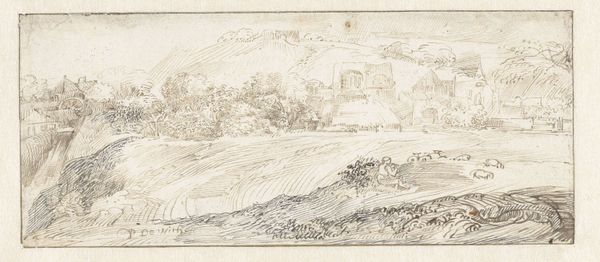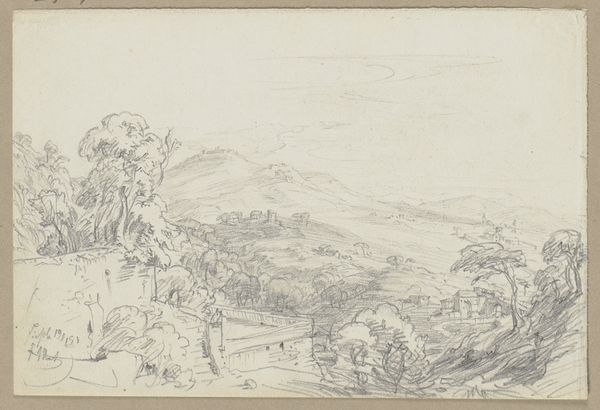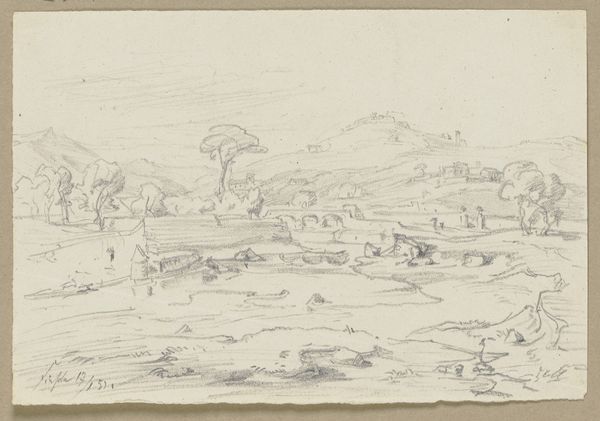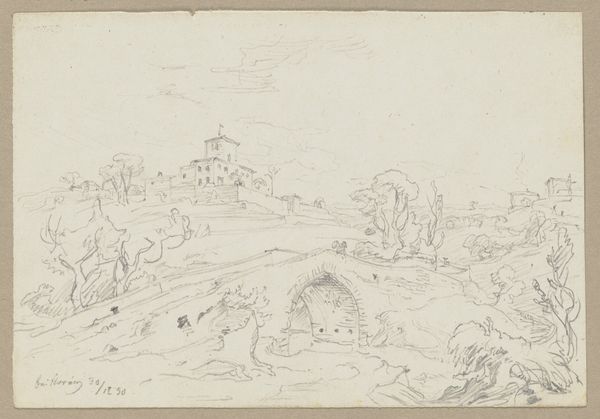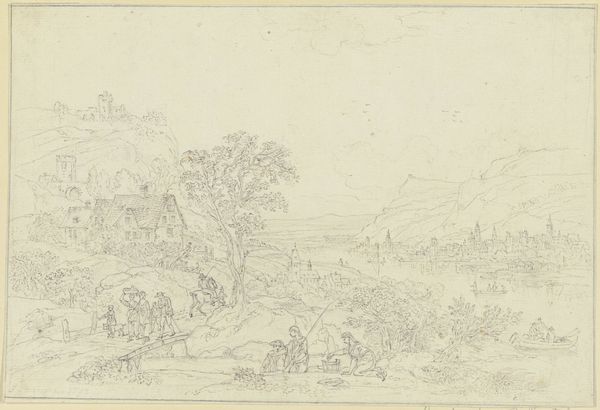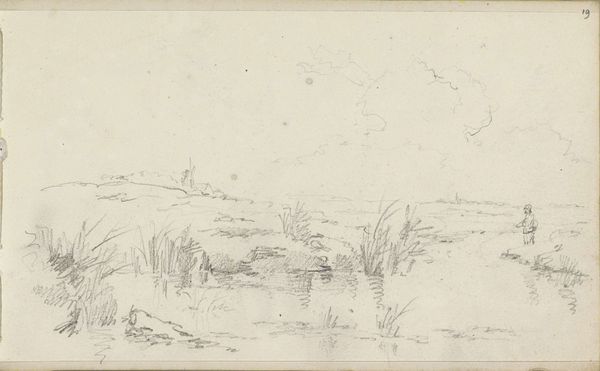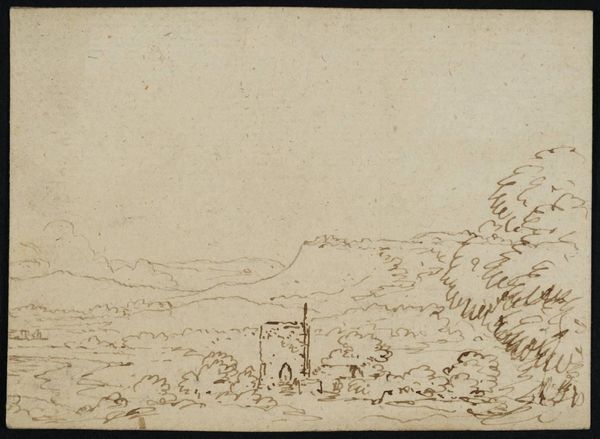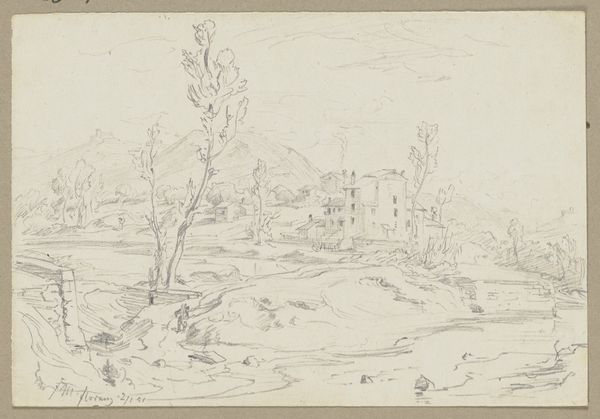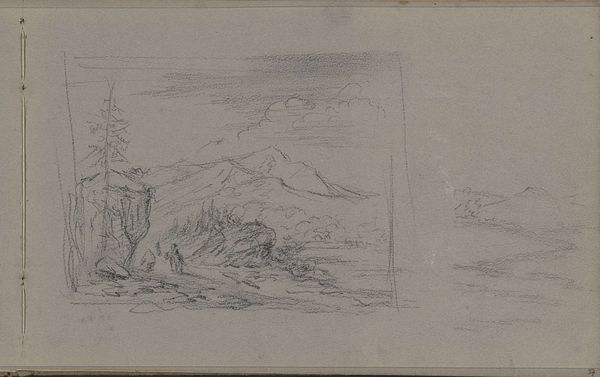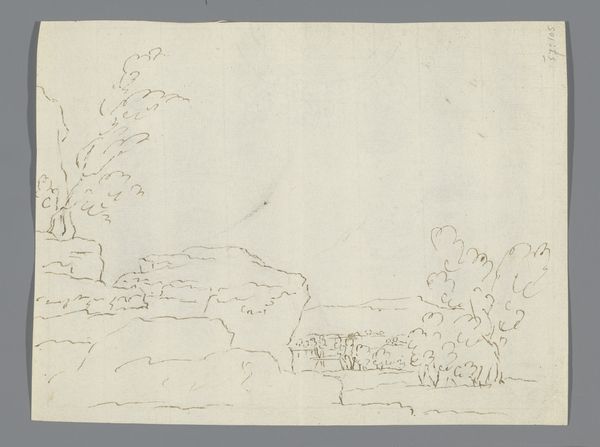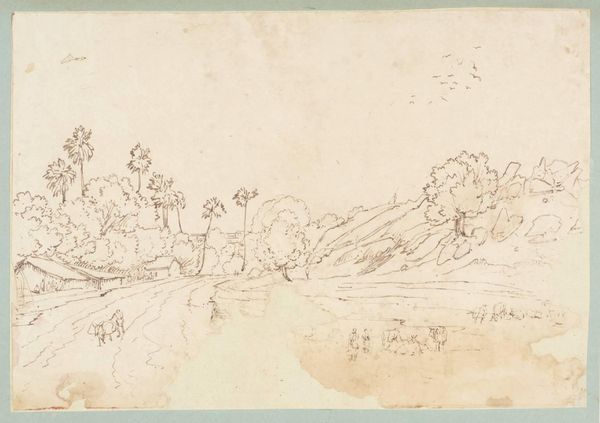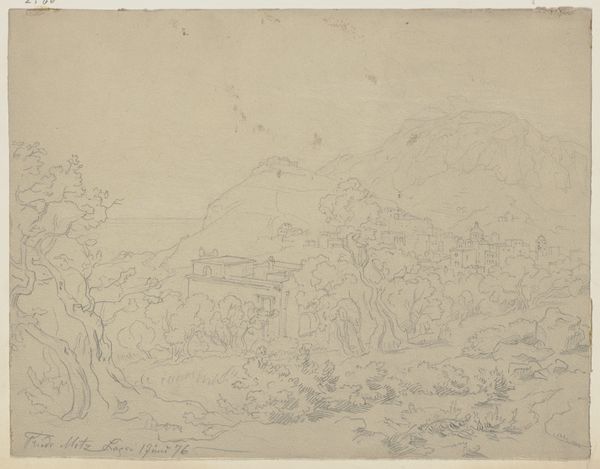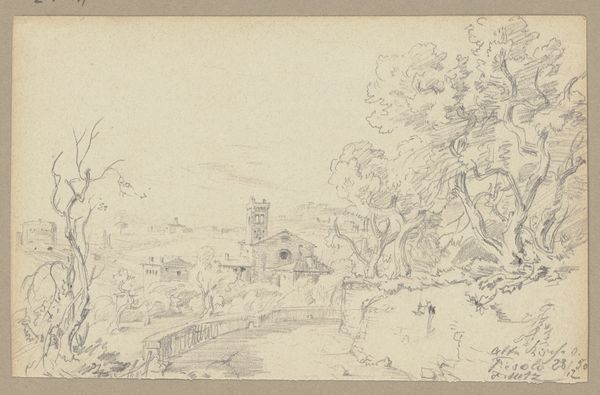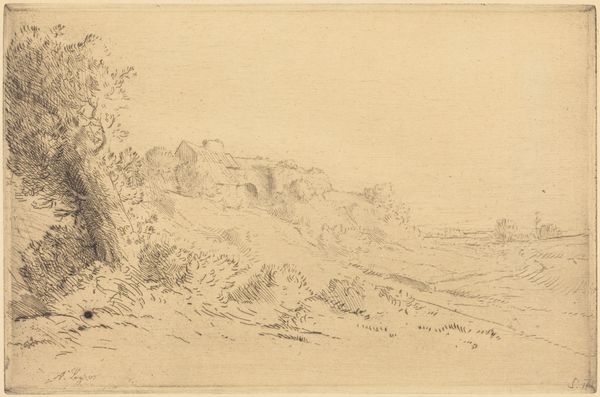
drawing, paper, pencil
#
drawing
#
pencil sketch
#
landscape
#
paper
#
pencil
#
realism
Dimensions: height 142 mm, width 218 mm
Copyright: Rijks Museum: Open Domain
Curator: Here we have Willem Cornelis Rip's "Heuvellandschap met figuren en een toren," or "Hills Landscape with figures and a tower", made with pencil on paper around 1874-1875. It’s a double landscape drawing. Editor: Immediately, I notice the separation, both a vertical split in composition and distinct atmospheric moods. The left side has a lightness, that cylindrical tower feels almost inviting despite being rather vaguely defined. The right however has a brooding quality and obscured lines in the forground that give me the impression that something is hidden, or perhaps lost. Curator: The tower stands as a classical symbol of power, structure, or a beacon, certainly. Its prominence draws our attention. While, it might represent the strength of established institutions, the delicate pencil strokes render it less imposing, softened. Perhaps Rip hints at something ephemeral, the transient nature of even the most enduring structures. Editor: And in the visual structure there's almost a tripartite layout: sky, ground, architecture. This emphasizes a hierarchical feeling – heavens overseeing humanity. I agree about the strokes, the slight blurring and use of line create that feeling. I see him almost challenging the notions of solidity. What's also clear is that the stark differences could show Rip struggling with which compositional path to use. The visual discord is there! Curator: Possibly a struggle or juxtaposition he embraces; both sides, through shared technique and materials, belong together despite distinct emotional resonance. Those figures in the left are dressed in clothing or red markings that would almost indicate sin. This tension reflects the ever-present dialectic of human existence: progress and regression, civilization and the wild unknown, existing within and against one another. Editor: I do see the landscape as holding a psychological duality within the image. And by visually articulating it so succinctly using only pencil on paper, Rip transforms this scene into more than simply what’s on the surface, don't you agree? Curator: Precisely. A rather profound and lasting reflection emerges from this fleeting impression of land, history and people!
Comments
No comments
Be the first to comment and join the conversation on the ultimate creative platform.
